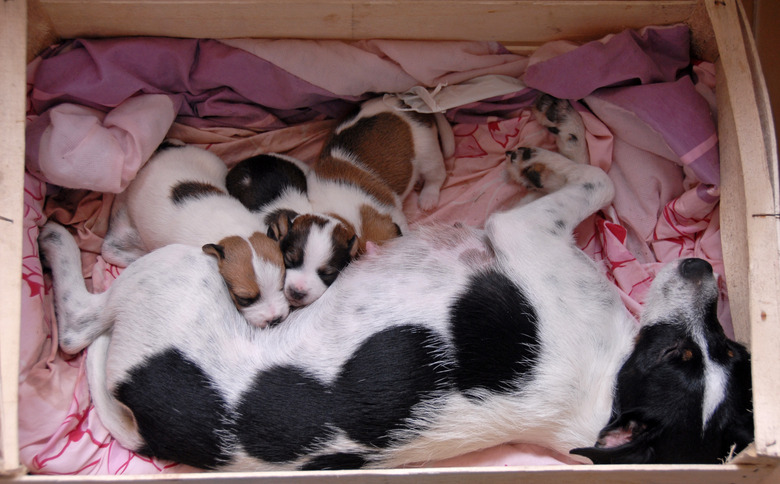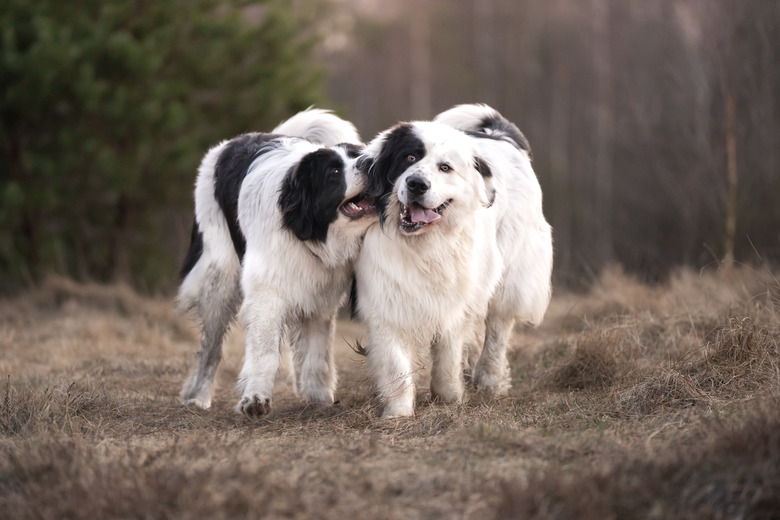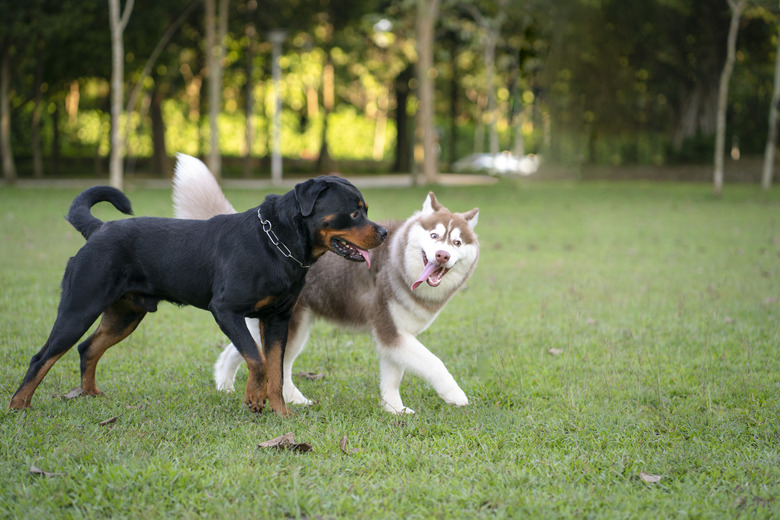How Dogs Become Pregnant
Puppies may be cute, but the reality is, caring for a pregnant dog is a lot of work. Pregnancy puts a strain on female dogs — not to mention you the owner, who will need care for the litter of puppies once they arrive, before finding them new homes. Spaying your dog is important to avoid accidental pregnancies.
This noted, a female dog typically can only become pregnant several days out of the year when she is in heat. Much depends on the size and age of the dog. Typically, dogs will come into season twice a year, every six months. However, smaller dogs may go into heat three times a year, while larger breeds may only experience one heat cycle in a year's time.
The canine heat cycle
The canine heat cycle
How long does it take a dog to get pregnant? It's helpful to understand the canine heat cycle to know how long this could take. A female dogs's heat cycle consists of four phases: proestrus, estrus, diestrus, and anestrus.
- Proestrus phase: This initial phase lasts about between seven to 10 days, during which the female dog may attract males, but she won't permit them to breed. During proestrus, female dogs experience a bloody discharge from their vaginas.
- Estrus phase: During this next phase, which lasts five to 10 days, the female dog's blood flow slows and eventually stops. The female is fertile and allows males to mate. She usually ovulates within two to three days after mating.
- Diestrus phase: The third phase lasts from ten to 140 days after estrus. If pregnant, the dog's reproductive organs will concentrating on carrying the pregnancy to term. If she's not pregnant, she'll enter a resting phase and will not breed. Some females experience false pregnancy during this phase. She may nest, display maternal behavior, and even lactate, despite not being pregnant.
- Anestrus phase: The final phase, anestrus, lasts three to four months, with no sexual interest on the part of the female. If she's delivered and nursed puppies, this is the time her body repairs itself from the stress of pregnancy and lactation.
When do dogs reach sexual maturity?
When do dogs reach sexual maturity?
Most female dogs experience their first heat cycle between six and 15 months. Veterinarians generally recommend spaying a dog before that date. Large breed female dogs might not have an initial heat cycle until the age of 18 to 24 months. Male dogs generally can impregnate females by the age of six months, although full sexual maturity occurs around a year old. Unlike females, males can breed anytime.
Dogs should never be bred during their first heat because they are still growing and developing; the stress of pregnancy can be detrimental. Dogs also should never be bred on subsequent heat cycles, as their bodies need time to recover between pregnancies.
As soon as your dog goes into heat, it's important to get her spayed to prevent an accidental pregnancy. This is important, even if she's an inside dog who never goes outside without a leash.
When she urinates during her cycle, she's sending hormonal signals to male dogs that she's available. That means you could find loose male canines attempting to get into your yard, which can be extremely stressful for both you and your dog.
How long does it take dogs to mate?
How long does it take dogs to mate?
When dogs mate, the session often ends with a coital tie. After the dog ejaculates, he and the female remain stuck together, because the swollen bulbus glandis on his penis prevents them from separating.
The dog might partially dismount, so the two dogs are facing opposite directions but joined at the genitals. It can take between five minutes to one hour for the dogs to separate. Never try to naturally separate them, as this could result in injury to one or both dogs.
What about artificial insemination?
What about artificial insemination?
Increasingly, purebred dogs become pregnant via artificial insemination. In this process, semen is collected from male dogs and can be used fresh or may be frozen for later use.
Use of fresh semen requires the presence of the male and female at the time of semen extraction and insemination, according to AKC regulations. The insemination should be performed by an experienced veterinarian. Artificial insemination is commonly used in breeds in which natural mating is difficult, such as the bulldog.


